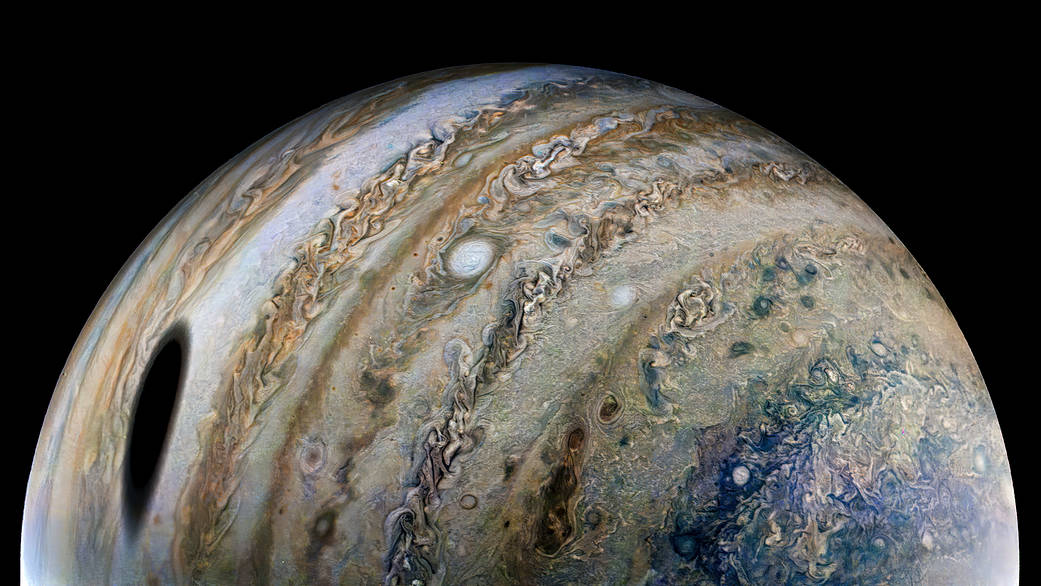What is that large dark smudge on Jupiter’s side? It may remind you of a certain scene from the sci-fi film “2010: The Year We Make Contact,” where a growing black spot appears in Jupiter’s atmosphere.
But this is a real photo, and the dark spot is just an elongated shadow of Ganymede, Jupiter’s largest moon. Just like when Earth’s Moon crosses between our planet and the Sun creating an eclipse for lucky Earthlings, when Jupiter’s moons cross between the gas giant and the Sun, they create shadows too.
NASA’s Juno spacecraft captured this view of Jupiter during the mission’s 40th close pass by the giant planet on Feb. 25, 2022. This image was taken by the camera on board the spacecraft, JunoCam, and processed by citizen scientist Thomas Thomopoulos. As you may know, JunoCam is a public outreach project, with people around the world actively participating in science investigation. Citizen scientists have processed the stunning images taken by JunoCam, as well as developing time-lapse movies, measuring wind flow, tracking circulation patterns in the circumpolar cyclones, and looking for lightning flashes.
Another citizen scientist/image processer, Brian Swift created the graphic below using JunoCam data, illustrating the approximate geometry of the visible area, projected onto a globe of Jupiter.

Credits: Image data: NASA/JPL-Caltech/SwRI/MSSS, Image processing by Brian Swift © CC BY
At the time this image was taken, the Juno spacecraft was about 44,000 miles (71,000 kilometers) above Jupiter’s cloud tops, at a latitude of about 55 degrees south, and 15 times closer than Ganymede, which orbits about 666,000 miles (1.1 million kilometers) away from Jupiter.
If you were lucky enough – or unlucky, perhaps due to the conditions on Jupiter – to be observer at Jupiter’s cloud tops within the oval shadow, you would experience a total eclipse of the Sun. NASA says that total eclipses are more common on Jupiter than Earth for several reasons. Jupiter has four large moons (known as the Galilean satellites) that often pass between Jupiter and the Sun: in seven days, Ganymede transits once; Europa, twice; and Io, four times. And since Jupiter’s moons orbit in a plane close to Jupiter’s orbital plane, the moon shadows are often cast upon the planet.
Jupiter’s moons and their shadows are even visible from even amateur telescopes on Earth. This image was taken by noted astrophotographer John Chumack.

See all of JunoCam’s raw images here, which are available for the public to peruse and process into images. Information about other citizen science projects at NASA can be found here and here.

